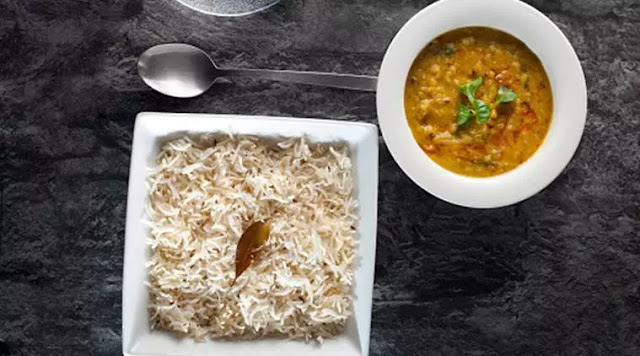Rice and Dal , a healthy meal choice for your toddler
The Indian thali of dal-rice is very beneficial for kids after a month of weaning time. Dal contains amino acids and rice contains sulphur-based amino acids, both of which are required by the body for synthesis of proteins.
Dal and rice is a great and an extremely healthy combination for growing kids. With excess protein and high nutritional value, the mixture makes for a perfect portion to satiate the appetite of a growing and healthy baby. The most effective combination to achieve maximum supplementary effects is four parts of cereal protein (rice) and one art of pulse (dal).
The Indian thali of dal-rice is very beneficial for kids after a month of weaning time. Dal contains amino acids and rice contains sulphur-based amino acids, both of which are required by the body for synthesis of proteins. A combination of dal and rice aids in protein synthesis, which helps build and strengthen muscles. One medium-sized katori or cup of dal-rice contains 290 kcal, 1.3 gm protein.
The protein in pulses / legumes is rich in lyesin (an essential amino acid and a building block of protein). They improve the absorption of calcium and help kidneys to hold on to the mineral promotes the formation of new blood vessels. In vegetarian diets, dals are the best source of protein. Dal and rice are the important source of B vitamins, especially thiamine. Cereals are considered to have a low fat content but rich in calcium and iron. While pulses with higher fat content (visible+invisible) contribute along with cereals to meet the EFA (Essential Fatty Acids) needs.
Initially, one should start with washed pulses like moong dhuli dal, lal masoor dal, arhar dal with a saute of asafoetida (hing), which are easily digestible, instead of whole wheat pulses. A child of one to two years of age requires 2 gm of plant protein or protein from dals. The combination of dal and rice is filling and gives a feeling of satiety to the child.
Most importantly, both the rice and dal should be overcooked as kids usually do not chew and swallow, hence the overcooked form makes it easy to digest. Adding cow’s ghee to dal and rice increases the nutrient value, making it easily palatable. The colour of dal rice can be changed every day to make it attractive for children, getting them to learn different colours.
· Monday: Green Dal Rice, by adding pudina and coriander chutney. This is rich in Vitamin A & C, increasing the absorption of iron.
· Tuesday: Yellow Dal Rice, with any yellow dal/moong dhuli + cow’s ghee.
· Wednesday: Red Dal Rice; Lal masoor dal with added tomatoes and beetroot juice.
· Thursday: Repeat Tuesday’s menu.
· Friday: White dal rice with curd.
· Saturday: Repeat Wednesday’s menu.
· Sunday: Repeat Friday’s menu.



Comments
Post a Comment